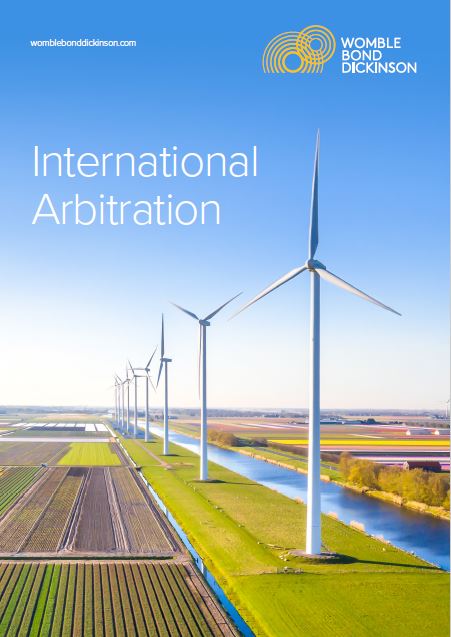
After a long period of economic and political stability, the world entered an era of relative turmoil with the onset of the COVID-19 pandemic. The effects of this and subsequent events have been acutely felt by businesses. For example, inflation has surged reaching nine percent in June 2022 in the US. The last time inflation was this high, Stephen Spielberg released E.T. (in 1982).
Supply chains have been particularly impacted by these global factors. After years of intense globalisation, it has become far more difficult to reliably source goods.
The response to these challenges has been impressive and some of the worst impacts have been mitigated. However, it remains undeniable that businesses are operating with more supply chain uncertainty than they have had in decades. Understanding the precise factors driving these issues in different localities is therefore essential.
This article assesses some of the drivers of supply chain disruption in the US and Europe and considers what businesses can do to mitigate the risks. These issues are likely to impact all sectors, however, they have particularly impacted the construction industry in recent years.
Supply chains in Europe
COVID-19
The worst days of lockdowns and daily news briefings are (hopefully) behind us. Even China relaxed its "zero COVID" policy in late 2022. Accordingly, COVID-related supply chain disruption in Europe is not on the scale it was a year ago.
However, the effects of the pandemic are enduring. For example, a number of workers are suffering from "long COVID" and have been taken out of the workforce. Further, a number of workers decided to take early retirement during the pandemic, which has further reduced the supply of workers. This has strained supply chains by reducing the productive capacity of European economies.
In the United States (and Europe), China’s zero COVID policy caused myriad issues disrupting supply chains at all levels and in ways that continue to reverberate throughout the economy. The early shutdown of factories, involving finished goods and components was the first blow, particularly affecting “just-in-time” manufacturing capacity. Today, three years later, 33 percent of supply chain leaders still list “shortage of critical parts or other goods” as the number one supply chain issue affecting their business.
Today, three years later, 33 percent of supply chain leaders still list “shortage of critical parts or other goods” as the number one supply chain issue affecting their business.
A lesser known, but no less disruptive ripple effect from the original Chinese shutdowns is the global lack of containers for moving goods. As goods ceased moving from manufacturers to market, ocean shippers – through which the vast majority of the world’s freight is transported – reduced vessels at sea. As China reopened, the containers that were available left Asia for Europe and the US. Given the restrictions still in place at those locations, containers began to stack up at destination ports without returning to manufacturing sites. Without containers, nothing moved – and supply chains could not get moving again. In many cases, supply chains are still trying to catch up from these twin issues.
War in Ukraine
On 24 February 2022 Russia invaded Ukraine, which signalled the start of first major war on the European continent since 1945. The war has had a huge impact on supply chains across Europe, particularly in relation to the products and materials used in the manufacturing and construction sectors. Businesses are adapting to the challenges, but the key issues remain. Some of these are addressed below.
The loss of productive capacity in Ukraine
Ukraine had significant industrial capacity, particularly in steel production. Unsurprisingly the war has both destroyed infrastructure and diverted output to the war effort. This has significantly reduced Ukrainian exports. For example, in January 2023, steel exports were down c.60 percent on the year. Ukraine also produced about 45 -54 percent of the world's neon, a gas used in the lasers that create semiconductors. The US sourced 90 percent of its neon from Ukraine.
Commodity shortages
Russia is a major commodities exporter. For example, Russia and Belarus produce about 10 percent of Europe's softwood. Further commodities in which Russia has a significant stake include copper, aluminium, bitumen, and asphalt. In addition, the US. imported substantial proportions of key metals, such as platinum, nickel, and titanium from Russia. The international sanctions on Russia and Belarus have hugely impacted the supply of these materials, emerging and ongoing problems with no real end in sight.
Seafarer shortages
Ukrainian nationals make up approximately 4 percent of global seafarers (Russians comprise even more). Given the situation in Ukraine, a number of Ukrainians are not able to take up contracts, thus reducing the supply of seafarers. Further, at the outbreak of the war, 94 vessels (mostly grain ships but other cargo ships as well) were trapped in Ukrainian ports. This has exacerbated problems with a shortage of merchant shipping capacity.
Energy crisis
Europe's energy policy over recent years has left it vulnerable to shocks. For example, Germany (a major industrial nation) relied on natural gas for 27 percent of its energy, of which more than half was sourced from Russia. Across the continent as a whole, Russia supplied approximately a third of Europe's oil and 35 percent of its natural gas.
When the war in Ukraine started and Russia was hit by sanctions, energy prices in Europe rocketed. These problems were exacerbated by other oil-producing nations deciding not to increase supply to fill the gap. The effects of this were felt widely and particularly by businesses with high energy demands.
The result was huge cost inflation, together with supply chain issues as some producers went out of business or suspended production. For example, some of Spain's largest cement producers suspended production in March 2022.
The worst of the energy shock might be over as European gas prices recently fell to their lowest level since July 2021. However, given the levels of geopolitical uncertainty, future shocks cannot be ruled out.
The worst of the energy shock might be over. However, given the levels of geopolitical uncertainty, future shocks cannot be ruled out.
Weather conditions and natural disasters
A series of natural disasters has exacerbated supply chain tensions in recent years. By way of example, the European summer of 2022 saw record breaking temperatures and very little rain. In Germany this led to the closure of the Rhine River, a key transport conduit, because its water level was so low. As climate change accelerates, it is anticipated that such events will become more common and will need to be factored into businesses' planning.
Another example of the potential impact of natural disasters is the Syria-Turkey earthquake in February 2023. This has impacted certain supply chains in Europe, as well as creating an expected surge in demand for materials such as steel as the rebuild starts.
Insolvency risk
Unfortunately, these supply chain issues, combined with generally challenging economic conditions, have increased the risk of insolvency, which has the potential to exacerbate already strained supply chains.
Brexit
After nearly 50 years of membership of the EU (and the preceding entities), the UK's supply chains became very tightly integrated with the EU's. For example, the EU provides around 60 percent of imported materials in the UK construction sector and the UK construction sector was reliant on the EU for skilled labour.
When the UK left the EU on 31 January 2020, including its single market and customs union, goods and services became subject to trade barriers. The issues this created have resulted in additional costs and time for businesses. It has also contributed to labour shortages, particularly in the construction and hospitality sectors. It is not clear yet what the long-term impact of Brexit will be on supply chains but in the short term, it compounded some of the supply chain and inflationary issues highlighted above.
Ways to protect supply chains and manage issues
With so many shocks and uncertainty in recent years it is impressive that so many businesses have managed to maintain the flow of goods and services that we rely on. However, it is advisable for businesses to consider mitigating their exposure.
From a legal perspective, the following can help to manage these risks:
- Be reasonable: it is always sensible to consider amicable solutions to problems but given the current trading conditions, we have seen an increase in parties choosing not to enforce strict legal rights, particularly when issues do not arise because of the clear fault of one party.
- Due diligence on suppliers: this is always important but in the current conditions it is particularly key to ensure that business partners are solvent and can deliver. This will likely require more due diligence (including in relation to parties' operations) than might have previously been normal.
- Robust security packages when entering into contract: we strongly recommend that parties consider what security is required when entering into contracts. For example, you might consider performance bonds, parent company guarantees and provisions regarding the transfer of ownership of goods.
- Consider inflation adjustment clauses in contracts: clearly fixed prices are good for purchasers, however, it can cause projects, particularly long running projects, to become distressed if suppliers' margins are eroded by inflation. It can therefore be in a purchaser's interest to accept well drafted inflation adjustment clauses. This is particularly true of long running and complex contracts, such as construction contracts.
- Limit the extent to which parties can subcontract: subcontracting lengthens supply chains, which can in turn increase risk. For example, it can become difficult for purchasers to manage multiple parties and to enforce legal claims through multiple contractual layers. Parties may therefore want to limit the extent to which contractual obligations can be subcontracted, or at least retain control of the process.
- Diversification of supply chains: clearly risk can be reduced if goods and services are or can be procured from multiple sources.
- Hold stock: clearly there is a storage cost to this, however, with the abovementioned threats to "just in time" supply chains, it can be a sound investment.
- Nearshore: the trend in recent decades has clearly been to create long supply chains that take advantage of cheap cost centres. However, in light of the above issues, it is now proving economical to engage suppliers closer to home, even if this means paying notionally higher prices.
This article is part of Womble Bond Dickinson’s Growing Global series. For more insights, click here to visit our Growing Global hub.


